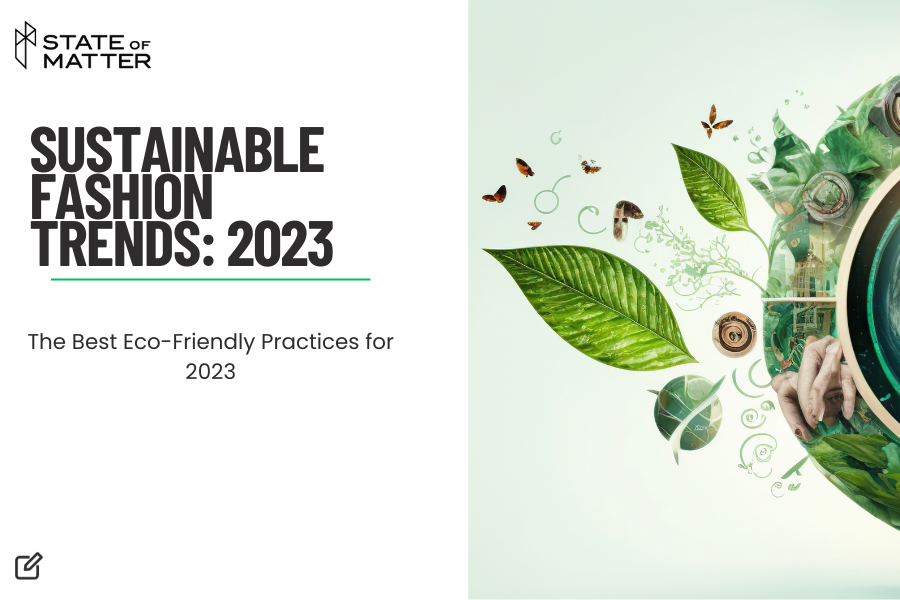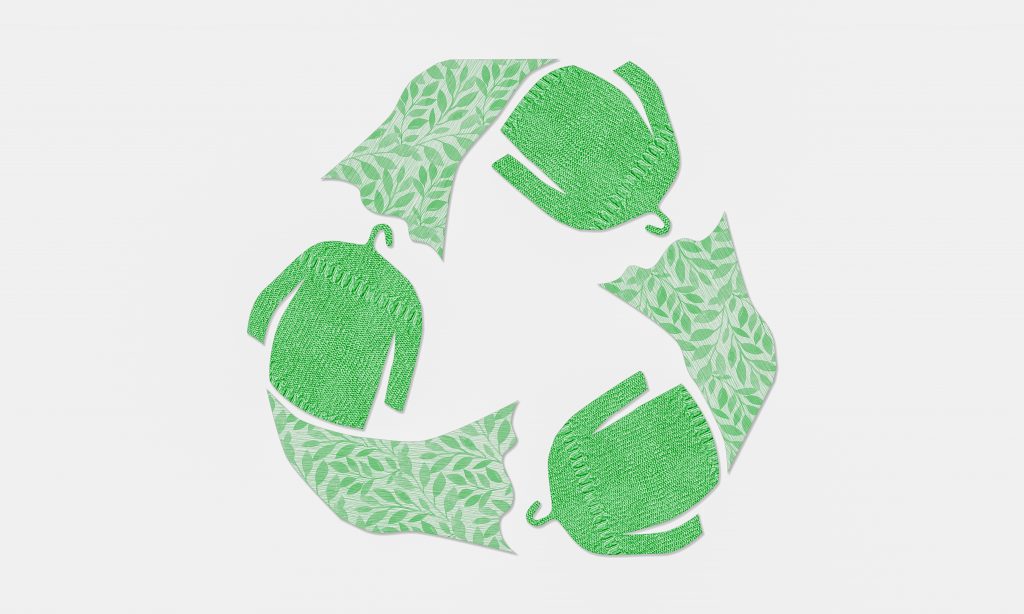Keep Ahead of the Curve by Exploring Cutting-edge Style Patterns
In a sector as vibrant as fashion, staying in advance entails more than just complying with existing fads-- it requires an exploration of development. Smart textiles, for circumstances, are transforming garments right into functional work of arts, while 3D printing is transforming layout procedures with its personalized, waste-reducing capabilities. As sustainability becomes a foundation, technologies like eco-friendly products and circular style practices are improving environmental obligation - Cape Town Sustainable Fashion. In addition, the convergence of modern technology and style declares a new period of customer involvement. How, then, can these arising patterns redefine the future of style, and what implications do they hold for brands looking for to flourish in this evolving landscape?

Accepting Smart Textiles
In the last few years, the garment industry has actually experienced a transformative change with the integration of clever textiles, an advanced advancement that mixes innovation with fabric. This development stands for not just a fusion of appearances and functionality yet also a significant leap in the direction of sustainability and customization in vogue. Smart textiles, additionally known as e-textiles, installed advanced electronics such as sensing units and conductive threads within the fabric, enabling garments to interact with the atmosphere or the user.
These textiles are designed to keep an eye on physiological specifications, such as heart price or body temperature, supplying real-time health analytics. Beyond wellness applications, wise textiles are additionally being utilized for adaptive garments, which can change shade or pattern in feedback to environmental stimulations, therefore providing a dynamic style experience.
Furthermore, the growth of energy-harvesting fabrics that produce power from movement or sunlight is leading the way for self-dependent wearable innovation. This technology is appealing to eco conscious consumers and designers intending to reduce the environmental impact of style. As r & d in this area development, wise textiles are anticipated to become significantly widespread, improving the landscape of contemporary style with their multifunctional abilities.
The Rise of 3D Printing
Revolutionizing the production landscape, 3D printing has become a game-changer in the apparel industry. This cutting-edge modern technology has actually enabled designers to press the limits of creative thinking, generating detailed and personalized garments that were formerly unimaginable. By leveraging electronic layout and additive production, 3D printing assists in the creation of intricate geometries and patterns, allowing designers to try out brand-new textures and frameworks.
A significant benefit of 3D printing in style is its capability to create on-demand, decreasing waste and reducing inventory needs. This performance not only optimizes production processes yet additionally enables rapid prototyping, enabling designers to bring their visions to life in a shorter timeframe. Furthermore, 3D printing supports customization somewhat unmatched by traditional approaches, using tailored fits and distinct designs tailored to specific customer choices.
The rise of 3D printing has actually also democratized fashion, making it easily accessible to emerging designers who can currently produce top notch pieces without substantial monetary investment in typical manufacturing framework. As technology remains to development, the style industry is positioned to harness the full possibility of 3D printing, exploring brand-new materials and strategies that will most certainly redefine exactly how style is conceived and produced.
Sustainable Style Developments
As the garment industry grapples with the pushing need for environmental duty, lasting style innovations have arised at the forefront of transformative adjustment. The expanding recognition of environmental impact has actually fueled a change in the direction of even important link more eco-conscious methods and materials. Brands and designers are now focusing on sustainability, including methods that minimize waste and reduce carbon impacts.
One substantial development is the surge of look at more info circular fashion, which emphasizes recycling and upcycling to prolong the lifecycle of garments. This strategy not only minimizes waste however likewise encourages consumers to embrace a much more conscious strategy to garments usage. In addition, the use of sustainable products, such as organic cotton, hemp, and recycled polyester, has obtained grip. These products need much less water and power throughout production, significantly decreasing environmental impact.
One more breakthrough lies in the adoption of cutting-edge dyeing techniques that make use of waterless processes or natural dyes, thereby lowering the substantial quantities of water and chemicals generally made use of in fabric dyeing. In addition, advancements in biotechnology have actually brought about the production of lab-grown natural leather and materials, using cruelty-free and ecologically pleasant choices to traditional products. Via these introducing initiatives, the apparel industry is making significant strides in the direction of a more lasting future.

Tech-Integrated Garments
Tech-integrated garments stands for an innovative combination of fashion and modern technology, improving how individuals connect with their garments. This cutting-edge domain name is marked by the addition of wise fabrics and embedded electronic components, boosting both performance and visual allure. From health and fitness trackers embedded in sports apparel to warmed coats controlled via smart device apps, tech-integrated apparel provides consumers unprecedented benefit and adaptability.
Introducing brand names are driving this fad, focusing on producing garments that react to environmental stimulations or user commands. For example, some garments can change shade or pattern in action to temperature shifts, while others include biometric sensors to keep track of wellness metrics like heart rate or stress degrees. The seamless combination of technology into textiles additionally extends to environmental sustainability, with initiatives to develop self-cleaning materials or garments that readjust to weather problems, hence decreasing the requirement for multiple layers.
Moreover, the arrival of wearable technology is not simply limited to clothes but prolongs to devices like watches and glasses, further widening the scope of tech-integrated style. As the industry proceeds to innovate, the potential for personalization and customization in garments grows, supplying consumers special, tech-enhanced fashion experiences that satisfy their private needs and choices.
Future of Virtual Style
Over the last few years, the future of online style has actually become a transformative pressure within the industry, leveraging improvements in electronic innovation to redefine exactly how style is developed, experienced, and taken in. By integrating augmented truth (AR), virtual fact (VIRTUAL REALITY), and 3D layout tools, developers can now craft interactive and immersive experiences that go beyond conventional fashion boundaries. Virtual style enables the development of garments that exist only in electronic atmospheres, using endless opportunities for advancement without the limitations of physical production.
This electronic change not only offers opportunities for imaginative expression yet also addresses sustainability problems fundamental in traditional style practices. Cape Town Sustainable Fashion. By eliminating the requirement for physical resources, digital style lowers waste and decreases carbon footprints. Furthermore, the rise of virtual style aligns with the raising customer demand for tailored and one-of-a-kind experiences, as digital garments can be customized and customized to private choices easily

Final Thought
The fashion business's future lies in the assimilation of cutting-edge technologies and sustainable practices - Cape Town Sustainable Fashion. Smart fabrics and tech-integrated clothing are improving performance, while 3D printing uses possibilities for customization and waste reduction. Sustainable fashion, with environmentally friendly products and circular strategies, shows a dedication to environmental stewardship. Moreover, virtual style is poised to redefine consumer communications. Adapting to these fads is necessary for brands seeking to remain competitive and pertinent in this quickly progressing landscape.
In recent years, the style market has seen a transformative shift with the integration of clever textiles, a cutting-edge technology that blends innovation with material.As the fashion market grapples with the pressing demand for ecological obligation, sustainable style developments have actually arised at the forefront of transformative modification.In recent years, the future of virtual style has actually emerged as a transformative pressure within the market, leveraging advancements in digital technology to redefine exactly how style is produced, experienced, and consumed. The surge of online fashion lines up with the increasing consumer need for one-of-a-kind and individualized experiences, as virtual garments can be tailored and customized to private choices with convenience.
The fashion sector's future lies in the combination of ingenious modern technologies and sustainable techniques.